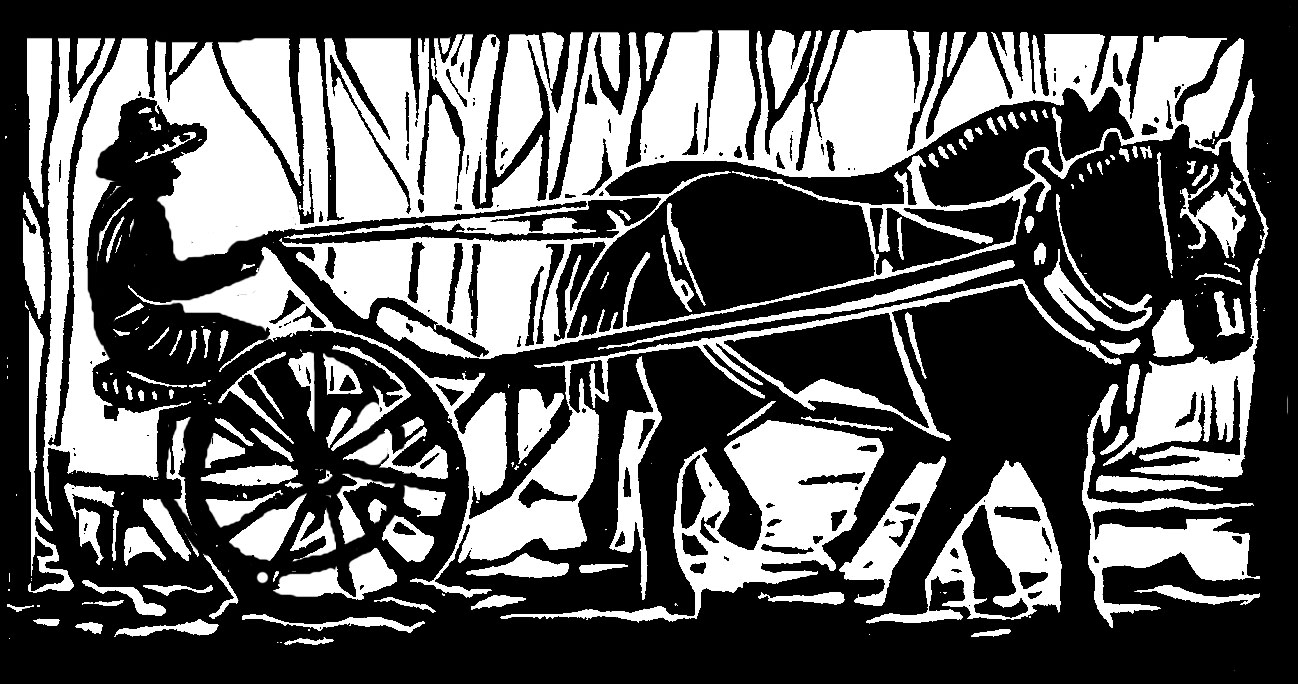We New Hampshire vegetable farmers spend a lot of our time these fine spring days with our beloved honey wagon. A honey wagon conjures up visions of flowers and sunshine and sweetness and abundance, does it not? Yet the honey wagon, should your farm-implements-knowledge need refreshing, is also known as a manure spreader.
And manure, should your farm-products-knowledge need refreshing as well, is also called stinky, icky, yukky, gross, and other choice words by some of our younger farm visitors. However, we do have some adventurous young souls who delight in walking barefoot in horse manure of any vintage, equally pleased with the feel on the child's foot and the look on the parent's face.
But happily, no matter how a person feels about manure, sustainable farming practices mean that the stinky, the icky, the yukky and the gross miraculously turn into sweetness and abundance: the honey of compost. It tales a year to happen, but it's amazing to see the beautiful result.
So, hey, it's not so bad when my farmer fellow invites me, one lovely spring day, to fill the honey wagon. We take our forks and our shovels, and we fill up the spreader with rich, dark, handsome compost. It takes the two of us about twenty minutes of steady work to fill up the spreader with a thousand lbs of compost, and then it takes about twenty seconds for two of our horses to empty the spreader on a garden section. This doesn't give the shoveling farmers much of a break, but the pulling horses enjoy their twenty minute rest while the shovelers get back to work.
Luckily, now that we've incorporated “green manuring” (a strange term that means plowing cover crops under for soil fertility) into our system, we don't have to fill the honey wagon quite so many times in one day. We need less total compost to prepare each garden section for planting, thanks to the cover cropping.
But our top record, our all-time high, back in the days of our farming youth and of our lack of sufficient garden space to cover crop and green manure, was ten spreader loads in one day. We started early, we sweated hard, and we wore our youthful selves out by mid-afternoon, when we were considerably slower than twenty minutes a pop in filling our loads.
Of course, this record doesn't include the halcyon days when our neighbor used to own a little tractor with a bucket loader, which we oh-so-gratefully borrowed on spreader filling days. Alas, when our nice neighbors realized we were using the tractor more than they were, they sold it.
We were back to forks and shovels, which our horses were happy about: more rest, and something about that roaring noise as the bucket lifted high above made our horses decidedly anxious. I would “head” the horses, standing next to their heads to provide gentle reassurance and certain proof that standing still was exactly the right thing to do at that moment, while my fellow loaded the spreader with the tractor. Certainly this was easier on the shovelers' bodies, but it was harder on their spirits: smelly from the exhaust fumes, noisy, and stressful.
In any case, once the spreader is full, either by means of tractor or muscle, it's time to spread the load in the garden. This is a rather clankety-clunkety, rattly, jostly, jouncy affair. The horses move right along, the spreader bounces right along, the farmer on the seat jounces right along, and the compost is flung into the air and plummets to the ground. The jostlier, jouncier of the farmers doesn't mind all this, and in fact seems to enjoy it.
However, the serene and peaceful farmer does not. Recently, though, the serene and peaceful farmer forgot how much she doesn't like to ride on the spreader. The jouncy farmer invited her so sweetly to join him, taking a turn around the field on the honey wagon, that she momentarily lost her good, serene, peaceful sense and agreed.
“Here we go,” said the honey-wagon driver, “Hold on!”
I lurched and bounced, gripping the seat, as we crossed the field, and then suddenly I bellowed
“Ow!” Instead of the seat, I gripped the back of my head, which a flying rock, hiding in the compost, had just struck.
“I swear,” said my sweet-talkin' fellow, “that hasn’t happened to me ever, in all the fourteen years I’ve been using this spreader! I swear!”
Ah, romance on the farm . . .
Originally published in the Monadnock Shopper News, May 13-19, 2015


